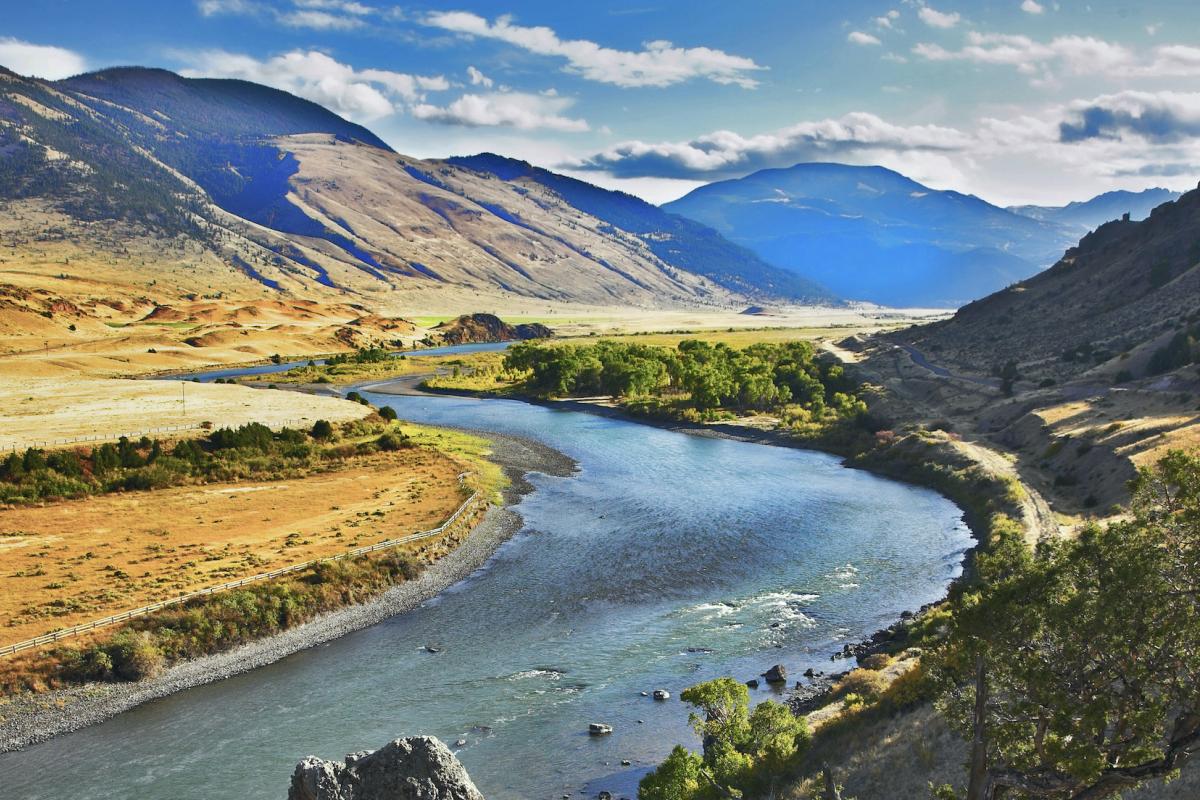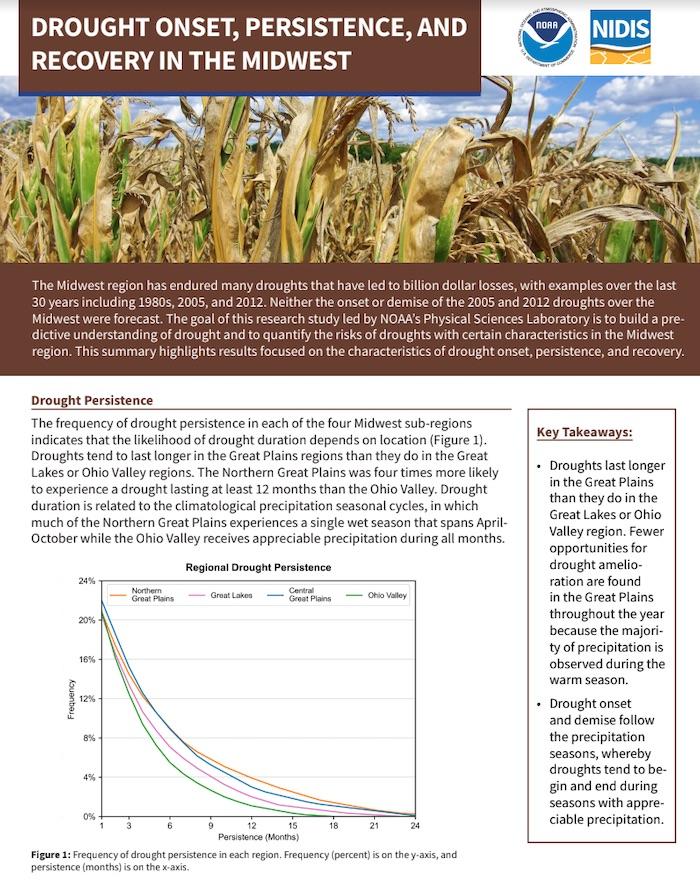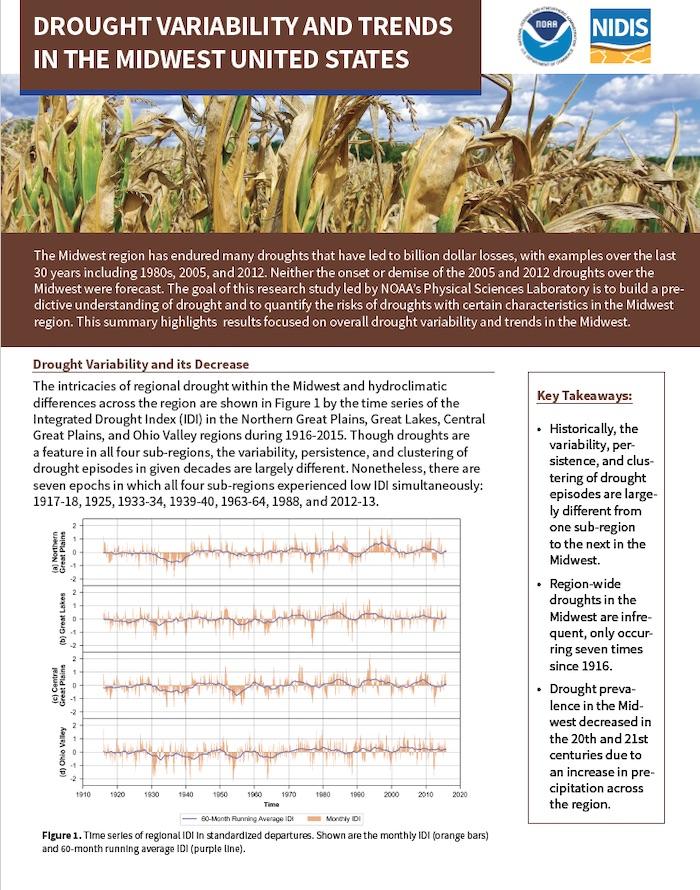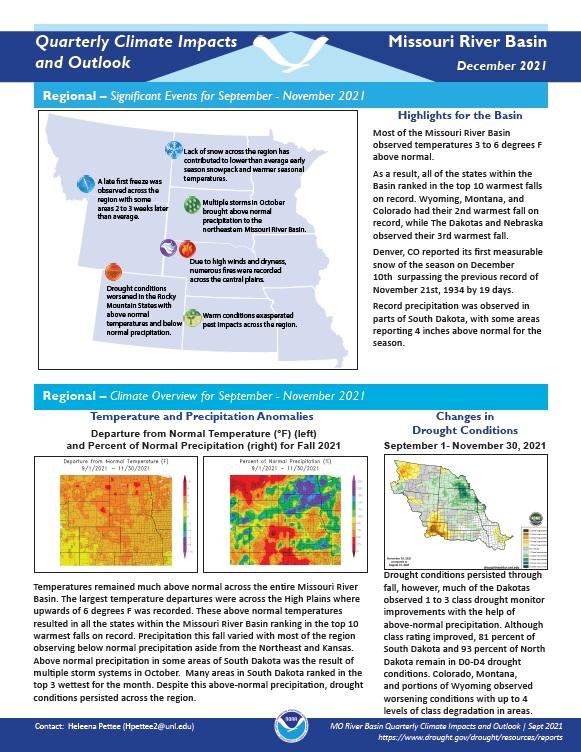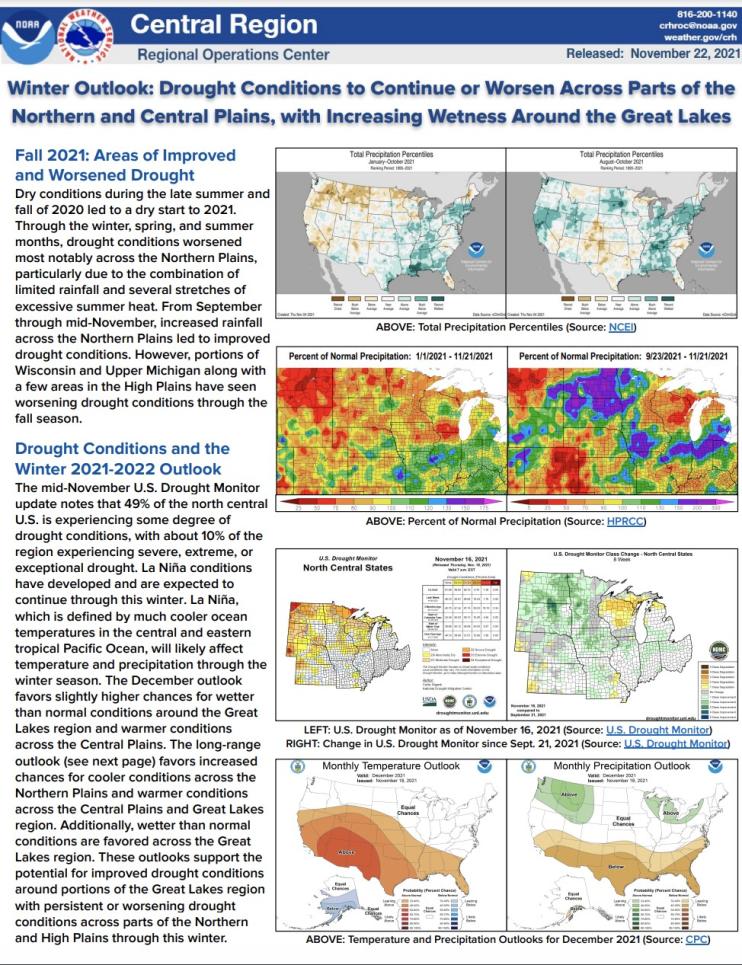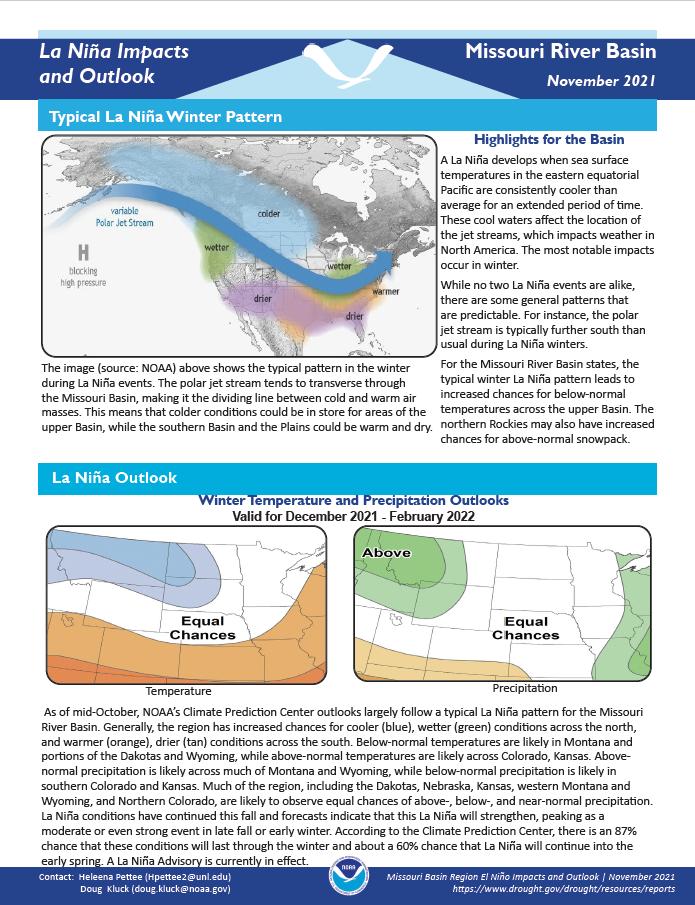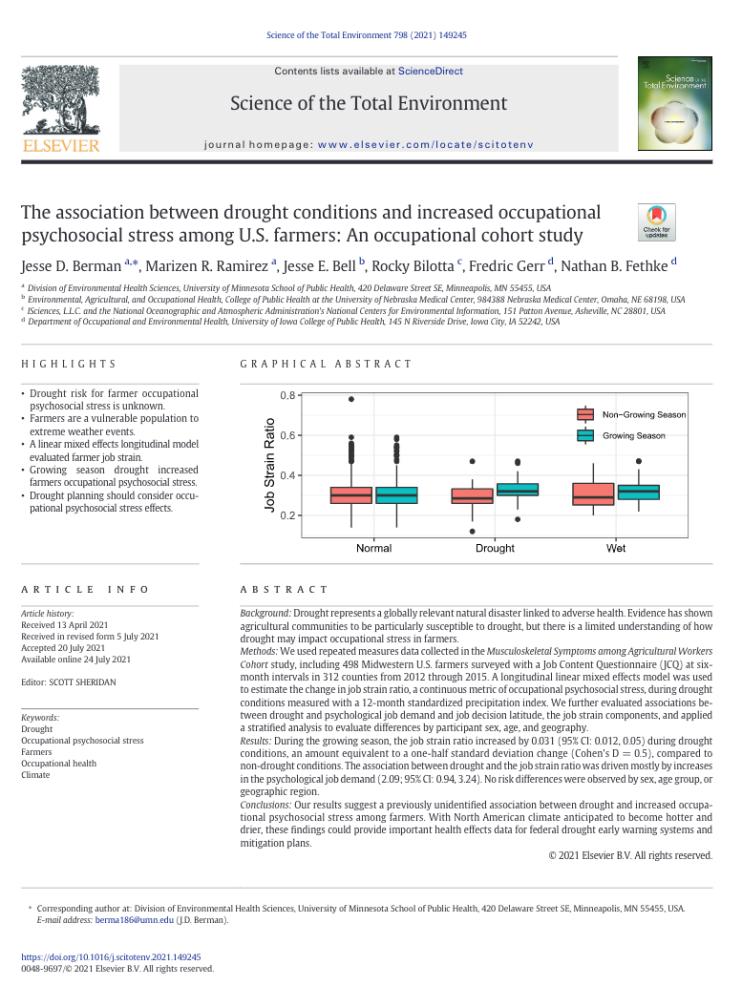The Midwest region has endured many droughts that have led to billion dollar losses, with examples over the last 30 years including 1980s, 2005, and 2012. Neither the onset or demise of the 2005 and 2012 droughts over the Midwest were forecast. The goal of this NIDIS-funded research study led by NOAA’s Physical Sciences Laboratory is to build a predictive understanding of drought and to quantify the risks of droughts with certain characteristics in the Midwest region.
The Midwest region has endured many droughts that have led to billion dollar losses, with examples over the last 30 years including 1980s, 2005, and 2012. Neither the onset or demise of the 2005 and 2012 droughts over the Midwest were forecast. The goal of this NIDIS-funded research study led by NOAA’s Physical Sciences Laboratory is to build a predictive understanding of drought and to quantify the risks of droughts with certain characteristics in the Midwest region.
Quarterly Climate Impacts and Outlook for the Missouri River Basin September - November 2021. Dated December 2021.
Temperatures remained much above normal across the entire Missouri River Basin. These above normal temperatures resulted in all the states within the Missouri River Basin ranking in the top 10 warmest falls on record. Precipitation this fall varied with most of the region observing below normal precipitation aside from the Northeast and Kansas.
Since 2011, the National Oceanic Atmospheric Administration’s Central Regional Climate Services Director, American Association of State Climatologists, U.S. Department of Agriculture Climate Hubs and Office of the Chief Economist, National Drought Mitigation Center (NDMC), and National Integrated Drought Information System have partnered to provide monthly climate and drought updates to stakeholders who live, work, or have interests in the North Central U.S.
The National Weather Service Central Region developed 2021–2022 Winter Hazard Outlooks in coordination with NOAA's National Centers for Environmental Information and National Integrated Drought Information System (NIDIS); U.S. Department of Agriculture; High Plains Regional Climate Center; and National Interagency Fire Center's Geographic Area Coordination Centers. This outlook highlights the various Winter hazards that could occur and potential impacts across the North Central U.S.
This handout provides information on the typical La Niña winter pattern; the La Niña outlook; potential winter and spring impacts; and comparisons of conditions during previous La Niña years for the Missouri River Basin region. Updated November 2021.
NOAA’s Regional Climate Services Program created these outlooks to inform the public about climate impacts within their respective regions. Each regional report contains easy-to-understand language, and anyone can access them through the Drought Portal.
Drought represents a globally relevant natural disaster linked to adverse health. But while evidence has shown agricultural communities to be particularly susceptible to drought, there is a limited understanding of how drought may impact occupational stress in farmers.


